Chris Eboch's Blog, page 12
April 27, 2019
Developing an Idea - Quick #Writing tips #amwriting
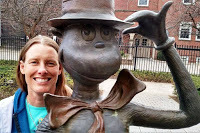 I hope these quick writing tips helps you jumpstart your writing!
I hope these quick writing tips helps you jumpstart your writing!This series on Developing Ideas is excerpted from You Can Write for Children: How to Write Great Stories, Articles, and Books for Kids and Teenagers . Grab the book if you want to see all the info at once.
Once you have your idea, it’s time to develop it into an article, short story, or longer project.
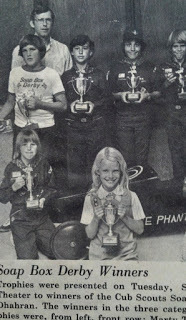 A girl wins the Boy Scout soapbox derby?
A girl wins the Boy Scout soapbox derby? Interesting premise, but then what….If you have a “great idea,” but can’t seem to go anywhere with it, you probably have a premise rather than a complete story plan. (See more posts on finding ideas.)
A story should have three parts: beginning, middle, and end (plus title and possibly bonus material). This can be a bit confusing though. Doesn’t every story have a beginning, middle, and end? It has to start somewhere and end at some point, and other stuff is in the middle. Beginning, middle, and end!
Technically, yes, but certain things should happen at those points.
Basic Story Structure
1. The beginning introduces a character with a problem or a goal.
2. During the middle of the story, that character tries to solve the problem or reach the goal. He probably fails a few times and has to try something else. Or he may make progress through several steps along the way. He should not solve the problem on the first try, however.
3. At the end, the main character solves the problem himself or reaches his goal through his own efforts.
You may find exceptions to these standard story rules, but it’s best to stick with the basics until you know and understand them. They are standard because they work!
Teachers working with beginning writers often see stories with no conflict – no problem or goal. The story is more of a “slice of life.” Things may happen, possibly even sweet or funny things, but the story does not seem to have a clear beginning, middle, and end; it lacks structure. Without conflict, the story is not that interesting.
Developing Your Conflict
You can have two basic types of conflict. An external conflict is something in the physical world. It could be a problem with another person, such as a bully at school, an annoying sibling, a criminal, or a fantastical being such as a troll or demon. External conflict would also include problems such as needing to travel a long distance in bad weather.
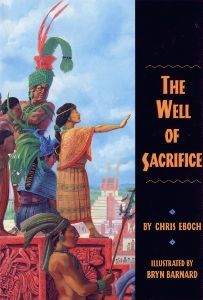 In
The Well of Sacrifice
, set in ninth-century Mayan Guatemala, the young heroine is trying to stop an evil high priest from taking over her city.
In
The Well of Sacrifice
, set in ninth-century Mayan Guatemala, the young heroine is trying to stop an evil high priest from taking over her city.In the Haunted series, about kids who travel with a ghost hunter TV show, a brother and sister are trying to understand and help the ghosts.
The other type of conflict is internal. This could be anything from fear of the dark to selfishness. It’s a problem within the main character that she has to overcome or come to terms with.
An internal conflict is often expressed in an external way. If a child is afraid of the dark, we need to see that fear in action. If she’s selfish, we need to see how selfishness is causing her problems. Note that the problems need to affect the child, not simply the adults around her. If a parent is annoyed or frustrated by a child’s behavior, that’s the parent’s problem, not the child’s. The child’s goal may be the opposite of the parent’s; the child may want to stay the same, while the parent wants the child to change.
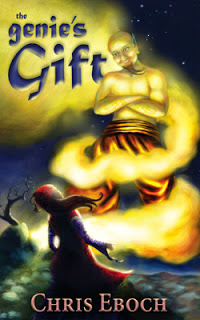 In
The Genie’s Gift
, a middle eastern fantasy, a sheltered girl goes on a magical journey in hopes of finding the strength to determine her own fate. Her journey is both internal, as she learns about herself, and external as she travels great distances and faces many dangers.
In
The Genie’s Gift
, a middle eastern fantasy, a sheltered girl goes on a magical journey in hopes of finding the strength to determine her own fate. Her journey is both internal, as she learns about herself, and external as she travels great distances and faces many dangers.Solid Story Endings
For stories with internal conflict, the main character may or may not solve the external problem. The child who is afraid of the dark might get over that fear, or she might learn to live with it by keeping a flashlight by her bed. The child who is selfish and doesn’t want to share his toys might fail to achieve that goal. Instead, he might learn the benefits of sharing.
However the problem is resolved, remember that the child main character should drive the solution. No adults stepping in to solve the problem! In the case where a child and a parent have different goals, it won’t be satisfying to young readers if the parent “wins” by punishing the child. The child must see the benefit of changing and make a decision to do so.
Stop back next week (or follow the blog) for more on story goals and a different way to think about “beginning, middle, and end.”
Get More Writing AdviceChris Eboch is the author of over 60 books for children, including nonfiction and fiction, early reader through teen. Her writing craft books include You Can Write for Children: How to Write Great Stories, Articles, and Books for Kids and Teenagers , and Advanced Plotting .
 Her novels for ages nine and up include
The Eyes of Pharaoh
, a mystery in ancient Egypt;
The Well of Sacrifice
, a Mayan adventure;
The Genie’s Gift
, a middle eastern fantasy; and the Haunted series, about kids who travel with a ghost hunter TV show, which starts with
The Ghost on the Stairs
. Learn more at https://chriseboch.com/ or her Amazon page.
Her novels for ages nine and up include
The Eyes of Pharaoh
, a mystery in ancient Egypt;
The Well of Sacrifice
, a Mayan adventure;
The Genie’s Gift
, a middle eastern fantasy; and the Haunted series, about kids who travel with a ghost hunter TV show, which starts with
The Ghost on the Stairs
. Learn more at https://chriseboch.com/ or her Amazon page.
Published on April 27, 2019 02:30
April 20, 2019
Developing Story and Article Ideas - Quick #Writing tips for the #Writerslife
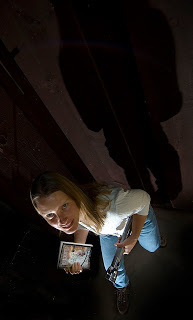 I hope these quick writing tips helps you jumpstart your writing!
I hope these quick writing tips helps you jumpstart your writing!This series on Developing Ideas is excerpted from You Can Write for Children: How to Write Great Stories, Articles, and Books for Kids and Teenagers . Get the book if you want to see all the info at once.
Developing Story Ideas
Once you have your idea, it’s time to develop it into an article, short story, or longer project. Of course, you can simply start writing and see what happens. Sometimes that’s the best way to explore an idea and see which you want to say about it. But you might save time – and frustration – by thinking about the story in advance. You don’t have to develop a formal, detailed outline, but a few ideas about what you want to say, and where you want the story to go, can help give you direction.
Story Structure
You can look at story structure in several ways. Here’s one example of the parts of a story or article:
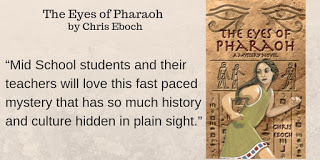 · A catchy title. The best titles hint at the genre or subject matter, as in these middle grade novels:
· A catchy title. The best titles hint at the genre or subject matter, as in these middle grade novels:The Eyes of Pharaoh : a mystery in ancient Egypt The Well of Sacrifice : an adventure set in Mayan times The Genie’s Gift : a middle eastern fantasy The Ghost on the Stairs : a ghost story
· A dramatic beginning, with a hook. A good beginning:– grabs the reader’s attention with action, dialogue, or a hint of drama to come– sets the scene– indicates the genre and tone (in fiction) or the article type (in nonfiction)– has an appealing style
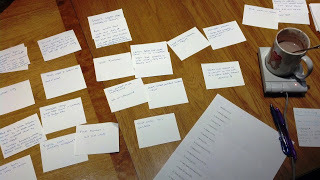 · A solid middle, which moves the story forward or fulfills the goal of the article.
· A solid middle, which moves the story forward or fulfills the goal of the article.Fiction should focus on a plot that builds to a climax, with character development. Ideally the character changes by learning the lesson of the story.
An article should focus on information directly related to the main topic. It should be organized in a logical way, with transitions between subtopics. The tone should be friendly and lively, not lecturing. Unfamiliar words should be defined within the text, or in a sidebar.
· A satisfying ending that wraps up the story or closes the article. Endings may circle back to the beginning, repeating an idea or scene, but showing change. The message should be clear here, but not preachy. What did the character learn?
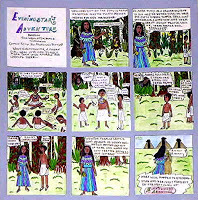 · Bonus material: An article, short story, or picture book may use sidebars, crafts, recipes, photos, etc. to provide more value. For nonfiction, include a bibliography with several reliable sources.
· Bonus material: An article, short story, or picture book may use sidebars, crafts, recipes, photos, etc. to provide more value. For nonfiction, include a bibliography with several reliable sources. Novels do not typically have these things, but they may contain an author’s note, a glossary of unfamiliar words, maps, or whatever makes the material more accessible and appealing. Classroom resources or book club discussion guides can be made available separately. For example, teachers can download lesson plans for use with my historical novels, The Eyes of Pharaohand The Well of Sacrifice, on my website.
You don't have to know all these pieces before you start writing. However, thinking about them first may save you editing time in the long run. Definitely make sure you have all the pieces before you submit your work!
Get More Writing Advice
Chris Eboch is the author of over 60 books for children, including nonfiction and fiction, early reader through teen. Her writing craft books include You Can Write for Children: How to Write Great Stories, Articles, and Books for Kids and Teenagers , and Advanced Plotting .

Her novels for ages nine and up include The Eyes of Pharaoh , a mystery in ancient Egypt; The Well of Sacrifice , a Mayan adventure; The Genie’s Gift , a middle eastern fantasy; and the Haunted series, about kids who travel with a ghost hunter TV show, which starts with The Ghost on the Stairs . Learn more at https://chriseboch.com/ or her Amazon page.
Chris also writes for adults under the name Kris Bock. Kris Bock novels are action-packed romantic adventures set in Southwestern landscapes. The Mad Monk’s Treasurefollows the hunt for a long-lost treasure in the New Mexico desert. In The Dead Man’s Treasure, estranged relatives compete to reach a buried treasure by following a series of complex clues. In The Skeleton Canyon Treasure, sparks fly when reader favorites Camie and Tiger help a mysterious man track down his missing uncle. Whispers in the Dark features archaeology and intrigue among ancient Southwest ruins. What We Found is a mystery with strong romantic elements about a young woman who finds a murder victim in the woods. In Counterfeits, stolen Rembrandt paintings bring danger to a small New Mexico town.
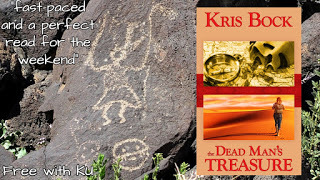 Fans of Mary Stewart, Barbara Michaels, and Terry Odell will want to check out Kris Bock’s romantic adventures. “Counterfeits is the kind of romantic suspense novel I have enjoyed since I first read Mary Stewart’s Moonspinners.” 5 Stars – Roberta at Sensuous Reviews blog
Fans of Mary Stewart, Barbara Michaels, and Terry Odell will want to check out Kris Bock’s romantic adventures. “Counterfeits is the kind of romantic suspense novel I have enjoyed since I first read Mary Stewart’s Moonspinners.” 5 Stars – Roberta at Sensuous Reviews blogRead excerpts at www.krisbock.comor visit her Amazon page. Sign up for the Kris Bock newsletter for announcements of new books, sales, and more.
Published on April 20, 2019 02:30
April 13, 2019
How To Find Story Ideas And Get Started Writing – Quick #Writing tips for the #Writerslife
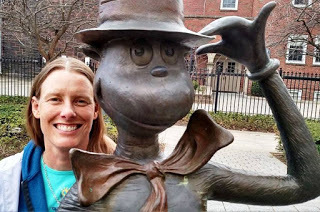 Jumpstart your writing!
Jumpstart your writing!Use these quick writing tips inspire you to move your story forward.
These tips for developing your idea are adapted from You Can Write for Children: How to Write Great Stories, Articles, and Books for Kids and Teenagers .)
Brainstorm Writing Ideas
Brainstorm 5 to 10 ideas for stories, articles, or novels. Then consider each idea in turn:
1. Focus your idea – be specific and narrow, especially with short stories or articles. For fiction, focus on an individual person and situation, not a universal ideal. For nonfiction, go deep on one aspect of the topic instead of trying to cover a broad, general idea.
2. Ask yourself: What am I trying to accomplish?Who am I trying to reach?Why am I writing this?
3. Know your audience – study the genre and age range. If you’re writing for publication, study publisher guidelines.
4. What do you need? Will you have to do research or conduct interviews?
5. What would make the best place to start? For more help, check out my other blogs on finding ideas.)
With these notes, review your list of ideas and choose your top three.
Who Will Read Your Writing?
If you’re writing for publication, identify three possible markets for each. If you can’t find three possible markets, maybe it’s not worth putting time into that idea. However, if you are writing purely for your own pleasure, for your family, or to develop your skills without thought of publication, skip this step – you can write whatever you want!
Get More Writing Advice
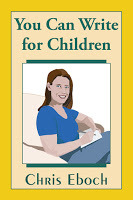 Chris Eboch is the author of over 60 books for children, including nonfiction and fiction, early reader through teen. Her writing craft books include
You Can Write for Children: How to Write Great Stories, Articles, and Books for Kids and Teenagers
, and
Advanced Plotting
.
Chris Eboch is the author of over 60 books for children, including nonfiction and fiction, early reader through teen. Her writing craft books include
You Can Write for Children: How to Write Great Stories, Articles, and Books for Kids and Teenagers
, and
Advanced Plotting
. Her novels for ages nine and up include The Eyes of Pharaoh , a mystery in ancient Egypt; The Well of Sacrifice , a Mayan adventure; The Genie’s Gift , a middle eastern fantasy; and the Haunted series, about kids who travel with a ghost hunter TV show, which starts with The Ghost on the Stairs . Learn more at https://chriseboch.com/or her Amazon page.

Published on April 13, 2019 03:00
April 6, 2019
You Can Find Story Ideas – Quick #Writing tips for the #Writerslife
 Do you need to jumpstart your writing?
Do you need to jumpstart your writing? I hope this series of quick writing tips inspires you to move your story forward!
Maybe you want to write, but you’re not sure whatyou want to write. Or perhaps you have so many ideas you don’t know where to start. Here are some tips for brainstorming novel or story ideas. (This is excerpted from You Can Write for Children: How to Write Great Stories, Articles, and Books for Kids and Teenagers .)
Take some time to relax and think about each question. Take lots of notes, even if you’re not sure yet whether you want to pursue an idea. You can put each idea on a separate index card, or fill a notebook, or start a file folder with scraps of paper. Do whatever works for you.
Find Your Writing Inspiration
Look for inspiration in other stories, books, or TV shows. Can you take the premise and write a completely different story? Do you want to write something similar (a clever mystery, a holiday story, or whatever)? Do you want to retell a folktale or fable as a modern version, or with a cultural twist? How can you make that idea your own. (Avoid copying anything too closely – that can lead to charges of plagiarism.)
 What do you see in the news? Is there a timely topic that could make a good article? If you read about a person doing something special, could you turn it into a profile for a magazine?
What do you see in the news? Is there a timely topic that could make a good article? If you read about a person doing something special, could you turn it into a profile for a magazine? How might that news story work as fiction? Could you base a short story or novel on a true story about someone surviving danger or overcoming great odds?
Wherever you look for ideas, search for things that are scary, exciting or funny – strong emotion makes a strong story.
Get More Writing Advice
 Chris Eboch is the author of over 60 books for children, including nonfiction and fiction, early reader through teen. Her writing craft books include
You Can Write for Children: How to Write Great Stories, Articles, and Books for Kids and Teenagers
, and
Advanced Plotting
.
Chris Eboch is the author of over 60 books for children, including nonfiction and fiction, early reader through teen. Her writing craft books include
You Can Write for Children: How to Write Great Stories, Articles, and Books for Kids and Teenagers
, and
Advanced Plotting
. Her novels for ages nine and up include The Eyes of Pharaoh , a mystery in ancient Egypt; The Well of Sacrifice , a Mayan adventure; The Genie’s Gift , a middle eastern fantasy; and the Haunted series, about kids who travel with a ghost hunter TV show, which starts with The Ghost on the Stairs . Learn more at https://chriseboch.com/or her Amazon page.

Published on April 06, 2019 03:00
March 30, 2019
Six Ways To Brainstorm Story Ideas – Quick #Writing tips for the #Writerslife
 Jumpstart your writing!
Jumpstart your writing!I hope this series of quick writing tips inspires you to move your story forward.
Maybe you want to write, but you’re not sure whatyou want to write. Or perhaps you have so many ideas you don’t know where to start. Here are some options for brainstorming ideas. (This is excerpted from You Can Write for Children: How to Write Great Stories, Articles, and Books for Kids and Teenagers , so it addresses writing stories for children. If you write for adults, simply do the exercises ignoring the "children" part.)
Inspiration for Writing
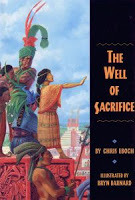 What hobbies or interests do you have that might interest children?What jobs or experiences have you had that could be a good starting point for an article or story?Do you know about other cultures, or a particular time period?What genres do you like? Would it be fun to write in that genre?
What hobbies or interests do you have that might interest children?What jobs or experiences have you had that could be a good starting point for an article or story?Do you know about other cultures, or a particular time period?What genres do you like? Would it be fun to write in that genre?
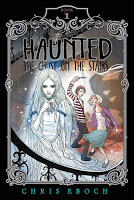 What genres did you like as a child? Did you love mysteries, ghost stories, fantasies, or science fiction? What were your favorite books? Why?Even the phonebook can provide inspiration. Check the Yellow Pages: Could you interview an automotive painter, animal trainer, or architect for an article? What would life be like for a child to have parents in that field? How about a teenager who dreams of entering the profession?
What genres did you like as a child? Did you love mysteries, ghost stories, fantasies, or science fiction? What were your favorite books? Why?Even the phonebook can provide inspiration. Check the Yellow Pages: Could you interview an automotive painter, animal trainer, or architect for an article? What would life be like for a child to have parents in that field? How about a teenager who dreams of entering the profession?Take some time to relax and think about each question. Take lots of notes, even if you’re not sure yet whether you want to pursue an idea. You can put each idea on a separate index card, or fill a notebook, or start a file folder with scraps of paper. Do whatever works for you.
Write with Emotion
Wherever you look for ideas, search for things that are scary, exciting or funny – strong emotion makes a strong story.
Don’t preach. Kids don’t want to read about children learning lessons. All stories have themes, but when someone asks you about a mystery you read, you’re probably not going to say, “It was a story about how crime doesn’t pay.” Rather, you’ll talk about the exciting plot, the fascinating characters, perhaps even the unusual setting. A story’s message should be subtle.
 Chris Eboch is the author of over 60 books for children, including nonfiction and fiction, early reader through teen. Her writing craft books include
You Can Write for Children: How to Write Great Stories, Articles, and Books for Kids and Teenagers
, and
Advanced Plotting
.
Chris Eboch is the author of over 60 books for children, including nonfiction and fiction, early reader through teen. Her writing craft books include
You Can Write for Children: How to Write Great Stories, Articles, and Books for Kids and Teenagers
, and
Advanced Plotting
. Her novels for ages nine and up include The Eyes of Pharaoh , a mystery in ancient Egypt; The Well of Sacrifice , a Mayan adventure; The Genie’s Gift , a middle eastern fantasy; and the Haunted series, about kids who travel with a ghost hunter TV show, which starts with The Ghost on the Stairs . Learn more at https://chriseboch.com/or her Amazon page.

Published on March 30, 2019 03:30
March 23, 2019
How To Find Story Ideas – Quick #Writing tips for the #Writerslife
 Do you need a bit of inspiration to jumpstart your writing? Sometimes it's overwhelming to read and process a long blog post or article. I hope this series of quick writing tips inspires you to move your story forward!
Do you need a bit of inspiration to jumpstart your writing? Sometimes it's overwhelming to read and process a long blog post or article. I hope this series of quick writing tips inspires you to move your story forward!Maybe you want to write, but you’re not sure whatyou want to write. Or perhaps you have so many ideas you don’t know where to start. Here are some options for brainstorming ideas. (This is excerpt from You Can Write for Children: How to Write Great Stories, Articles, and Books for Kids and Teenagers , so it addresses writing stories for children. If you want to write for adults, simply do the exercises with people of a suitable age.)
Find story and article ideas based on the experiences of your children, grandchildren, students, or other young people you know:
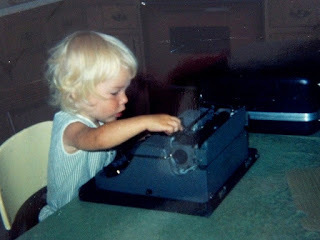 · What interests them?
· What interests them?· What frightens them?
· What do they enjoy?
· What challenges do they face?
· What do their lives involve – school, sports, family, religion, clubs?
Take lots of notes, even if you’re not sure yet whether you want to pursue an idea. You can put each idea on a separate index card, or fill a notebook, or start a file folder with scraps of paper. Do whatever works for you.

Chris Eboch is the author of over 60 books for children, including nonfiction and fiction, early reader through teen. Her writing craft books include You Can Write for Children: How to Write Great Stories, Articles, and Books for Kids and Teenagers , and Advanced Plotting .
Her novels for ages nine and up include The Eyes of Pharaoh , a mystery in ancient Egypt; The Well of Sacrifice , a Mayan adventure; The Genie’s Gift , a middle eastern fantasy; and the Haunted series, about kids who travel with a ghost hunter TV show, which starts with The Ghost on the Stairs . Learn more at https://chriseboch.com/ or her Amazon page.

Published on March 23, 2019 03:00
March 16, 2019
How To Find Story Ideas – Quick #Writing tips for the #Writerslife
 Do you need a bit of inspiration to jumpstart your writing? Sometimes it's overwhelming to read and process a long blog post or article. I hope this series of quick writing tips inspires you to move your story forward!
Do you need a bit of inspiration to jumpstart your writing? Sometimes it's overwhelming to read and process a long blog post or article. I hope this series of quick writing tips inspires you to move your story forward!Maybe you want to write, but you’re not sure whatyou want to write. Or perhaps you have so many ideas you don’t know where to start. Here are some options for brainstorming ideas. (This is excerpted from You Can Write for Children: How to Write Great Stories, Articles, and Books for Kids and Teenagers , so it addresses writing stories for children. If you want to write for adults, simply do the exercises ignoring the "as a child" part.)
Take some time to relax and think about each question. Delve deep into your memories. Take lots of notes, even if you’re not sure yet whether you want to pursue an idea. You can put each idea on a separate index card, or fill a notebook, or start a file folder with scraps of paper. Do whatever works for you.
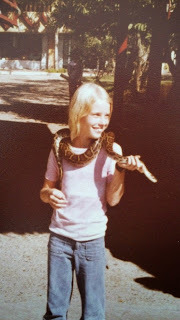 Find story and article ideas based on your childhood experiences, fears, dreams, etc.:
Find story and article ideas based on your childhood experiences, fears, dreams, etc.:· What’s the scariest thing that happened to you as a child? The most exciting? The funniest?
· What’s the most fun you ever had as a child? What were your favorite activities?
· What was the hardest thing you had to do as a child?
· What interested you as a child?
· When you were a child, what did you wish would happen?
 Chris Eboch is the author of over 60 books for children, including nonfiction and fiction, early reader through teen. Her writing craft books include
You Can Write for Children: How to Write Great Stories, Articles, and Books for Kids and Teenagers
, and
Advanced Plotting
.
Chris Eboch is the author of over 60 books for children, including nonfiction and fiction, early reader through teen. Her writing craft books include
You Can Write for Children: How to Write Great Stories, Articles, and Books for Kids and Teenagers
, and
Advanced Plotting
. Her novels for ages nine and up include The Eyes of Pharaoh , a mystery in ancient Egypt; The Well of Sacrifice , a Mayan adventure; The Genie’s Gift , a middle eastern fantasy; and the Haunted series, about kids who travel with a ghost hunter TV show, which starts with The Ghost on the Stairs . Learn more at https://chriseboch.com/ or her Amazon page.

Published on March 16, 2019 04:00
January 16, 2019
Learning to Write by Reading - #amwriting
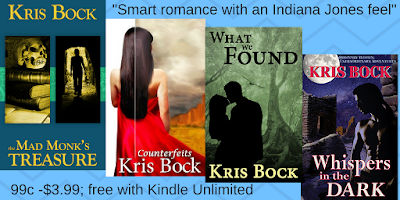 Chris writes romantic suspense as Kris BockI'm on a listserv for readers who are interested in mysteries (DorothyL). Someone recently started a discussion: "Is There a Fiction Book that Helped Teach You How to Write?" I thought my answer might make a good blog post, so here it is.
Chris writes romantic suspense as Kris BockI'm on a listserv for readers who are interested in mysteries (DorothyL). Someone recently started a discussion: "Is There a Fiction Book that Helped Teach You How to Write?" I thought my answer might make a good blog post, so here it is.I've learned more about writing mysteries from the books I put down. Why did I lose interest?
Sometimes the answer is obvious in the first pages – poor writing. But in the last year, I've started a number of books and initially been impressed with the writing quality. But then I quit reading after a few chapters. I usually lose interest for one of two reasons:
First: I simply don't care if the main character succeeds in her goal. In a cozy mystery, the amateur detective has no real reason to be investigating. The crime doesn't directly affect her or her family or friends, and/or there's no reason to think the police can't take care of things.
 But it's not enough to make the detective a professional, so it's her job to investigate. The stakes can still feel low if there isn't some reason for me to be interested in seeing this particular crime solved, right now.
But it's not enough to make the detective a professional, so it's her job to investigate. The stakes can still feel low if there isn't some reason for me to be interested in seeing this particular crime solved, right now. That's not to say the stakes have to include the main character being accused of the crime. In the Brother Cadfael books by Ellis Peters, Brother Cadfael cares deeply about justice and protecting the innocent, even people he barely knows. And so, as a reader, I care.
 In a similar vein, I've always enjoyed Elaine Orr's Jolie Gentil Series. Jolie doesn't always have a good *practical* reason to investigate. But she has a burning desire to understand the truth. This is shown through her thoughts and actions, so it feels authentic to her character, not something tacked on by the author as an excuse for unbelievable behavior. To me that's a stronger motive than the surprisingly common "My horrible ex-husband has been accused of a crime, so I guess I have to get involved."
In a similar vein, I've always enjoyed Elaine Orr's Jolie Gentil Series. Jolie doesn't always have a good *practical* reason to investigate. But she has a burning desire to understand the truth. This is shown through her thoughts and actions, so it feels authentic to her character, not something tacked on by the author as an excuse for unbelievable behavior. To me that's a stronger motive than the surprisingly common "My horrible ex-husband has been accused of a crime, so I guess I have to get involved." 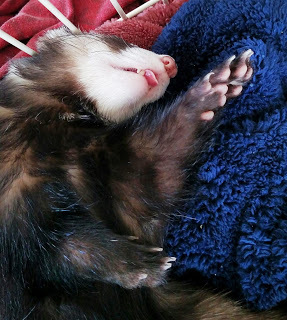 Second: Not enough happens. One historical mystery I tried recently started out well, with dramatic action and strong writing. But this was followed by several chapters where the story didn't progress. A couple of new characters were introduced. They talked with the MC about topics that had already been discussed. Nobody had new information. The big mystery was barely acknowledged. The MC hadn't committed to learning more about it yet. Finally I got so bored I gave up. Perhaps things would've picked up again in a few chapters … but by that point, I didn't care enough to wait.
Second: Not enough happens. One historical mystery I tried recently started out well, with dramatic action and strong writing. But this was followed by several chapters where the story didn't progress. A couple of new characters were introduced. They talked with the MC about topics that had already been discussed. Nobody had new information. The big mystery was barely acknowledged. The MC hadn't committed to learning more about it yet. Finally I got so bored I gave up. Perhaps things would've picked up again in a few chapters … but by that point, I didn't care enough to wait.When I critique manuscripts, I often wind up explaining the necessity of having goal-motivation-conflict in every chapter.
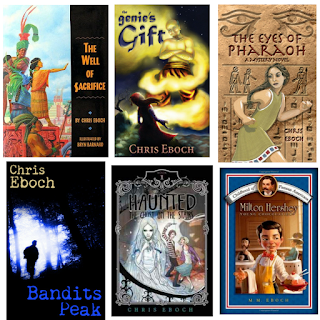 Another way to keep your story moving is to focus on your main character's goal in each scene. Even if we know what the overall goal is (gather warriors in order to battle the monster), remind the reader at the beginning of each scene what the scene goal is – and what the main character has to do to achieve it. You can also remind the reader why it is important (motivation) and why it will be difficult (conflict). This way, the reader is waiting to see if the main character will succeed or fail. It's also a way for you to check that your main character is staying active, and not just tagging along for the ride.
Another way to keep your story moving is to focus on your main character's goal in each scene. Even if we know what the overall goal is (gather warriors in order to battle the monster), remind the reader at the beginning of each scene what the scene goal is – and what the main character has to do to achieve it. You can also remind the reader why it is important (motivation) and why it will be difficult (conflict). This way, the reader is waiting to see if the main character will succeed or fail. It's also a way for you to check that your main character is staying active, and not just tagging along for the ride.Sometimes writers know what the goal is, and why it's important, but forget to put it on the page. Sometimes writers get caught up in their own writing and don't realize they haven't had any conflict in a while. Sometimes writers haven't gotten close to their main characters, so the characters' behavior doesn't seem to come naturally from their personality.
Writing is hard! It's why I recommend making an outline after writing a draft, to see what's really in the story rather than what you meant to include and thought you included. (More on that here.) It's the key to the revision method I discuss in Advanced Plotting .
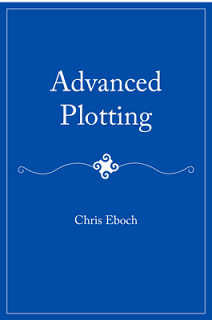 The Plot Outline Exercise is designed to help a writer work with a completed manuscript to identify and fix plot weaknesses. It can also be used to help flesh out an outline.
The Plot Outline Exercise is designed to help a writer work with a completed manuscript to identify and fix plot weaknesses. It can also be used to help flesh out an outline. Additional articles address specific plot challenges, such as getting off to a fast start, propping up a sagging middle, building to a climax, and improving your pacing. A dozen guest authors share advice from their own years of experience.
Channeling The Reader’s Brain: What We Expect of Every Story, from Fiction University: The protagonist should want something, fear something, struggle, and change.
The Two Things Every Novel Needs, by James Scott Bell, from Crime Fiction Collective: Conflict and Suspense.
Four Questions To Ask When Your Writing Is Stuck, from Writer Unboxed: Quick overview on goals, motivation, conflict, and character change.
Ask an Editor with Theresa Stevens, from Romance University: A first-page critique discussing goals, motivation, and conflict.
Worrying Isn't Action by Mary Kole from Kidlit.com: "...use worry to amp up tension and raise stakes and definitely include it as Interiority. But remember that you need to balance it well with external conflict, or you risk your character…just sitting there."
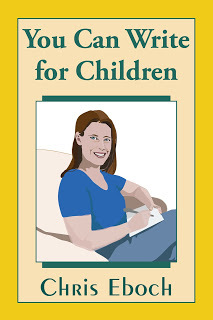 Chris Eboch is the author of You Can Write for Children: How to Write Great Stories, Articles, and Books for Kids and Teenagers is available for the Kindle, in paperback, or in Large Print paperback.
Chris Eboch is the author of You Can Write for Children: How to Write Great Stories, Articles, and Books for Kids and Teenagers is available for the Kindle, in paperback, or in Large Print paperback.Remember the magic of bedtime stories? When you write for children, you have the most appreciative audience in the world. But to reach that audience, you need to write fresh, dynamic stories, whether you’re writing rhymed picture books, middle grade mysteries, edgy teen novels, nonfiction, or something else.
Published on January 16, 2019 02:00
December 1, 2018
#Writing Resources for #KidLit Children’s Book Writers
 Books: The Idiot’s Guide to Children’s Book Publishing, by Harold Underdown, explains everything from the genres to how to find a publisher. Underdown also has FAQs about the children’s book industry, and publisher updates, on his website. The Way to Write for Children, by Joan Aiken, is also recommended. Writer’s Digest also offers books on writing for children and basic writing craft, plus market guides.
Books: The Idiot’s Guide to Children’s Book Publishing, by Harold Underdown, explains everything from the genres to how to find a publisher. Underdown also has FAQs about the children’s book industry, and publisher updates, on his website. The Way to Write for Children, by Joan Aiken, is also recommended. Writer’s Digest also offers books on writing for children and basic writing craft, plus market guides.You Can Write for Children : How to Write Great Stories, Articles, and Books for Kids and Teenagers, by Chris Eboch, offers an overview on writing for young people. Learn how to find ideas and develop those ideas into stories, articles, and books. Understand the basics of character development, plot, setting, and theme – and some advanced elements, along with how to use point of view, dialogue, and thoughts. Finally, learn about editing your work and getting critiques.
You Can Write for Children : How to Write Great Stories, Articles, and Books for Kids and Teenagers is available for the Kindle, in paperback, or in Large Print paperback.
Chris Eboch’s Advanced Plotting is designed for the intermediate and advanced writer: you’ve finished a few manuscripts, read books and articles on writing, taken some classes, attended conferences. But you still struggle with plot, or suspect that your plotting needs work.
This really is helping me a lot. It's written beautifully and to-the-point. The essays really help you zero in on your own problems in your manuscript. The Plot Outline Exercise is a great tool!
The Society of Children’s Book Writers and Illustrators (first year $95, then $80 yearly) provides informational publications on the art and business of writing and illustrating. SCBWIalso publishes a bimonthly newsletter and offers awards and grants for published works and works in progress. SCBWImembers can join discussion boards. The SCBWI has an annual Summer Conference in Los Angeles and events around the US and the world. Learn more, or find out what’s happening in your region, via the organization’s main website.
SCBWI-New Mexico, our regional branch, sends out weekly e-lerts (email notices) about our programs, other local events, and industry information. Contact elertsto get on the mailing list. We also put out a quarterly newsletter on the web site. Visit the region’s page at the organization’s main website for activities and our latest newsletter.
We have monthly Shop Talks in Albuquerque, the second Tuesday of each month, from 7-8:30 at North Domingo Baca Multigenerational Center. These feature short workshops or discussions, followed by social time. Topics and location are announced through the e-lerts.
A peer critique group meets on the third Saturday of the month, from 1:30 to 3:30 at the Erna Ferguson Library community room.
Helpful blogs:KidLit.com: Agent Mary Kole runs this blog for readers and writers of children’s literature.
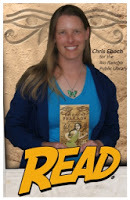 Adventures in YA Publishing: A group blog by young adult writers.Project Mayhem: A group blog by middle grade writers. Cynsations: News and lots of links on all aspects of children’s literature, especially multicultural books.Chris Eboch’s blog: Posts on the craft of writing - see the topics list to the right.Janice Hardy’s Fiction University: Great craft advice.Critiques by Chris: $2 per page for novels; $50 for works up to 1200 words (picture books, stories, or articles). This provides a critique letter of editorial comments on plot, characterization, flow, language, etc. (1-2 pages for short work, 4-6 pages for novels), plus notes written on the manuscript. Learn more at her website “for writers” page.
Adventures in YA Publishing: A group blog by young adult writers.Project Mayhem: A group blog by middle grade writers. Cynsations: News and lots of links on all aspects of children’s literature, especially multicultural books.Chris Eboch’s blog: Posts on the craft of writing - see the topics list to the right.Janice Hardy’s Fiction University: Great craft advice.Critiques by Chris: $2 per page for novels; $50 for works up to 1200 words (picture books, stories, or articles). This provides a critique letter of editorial comments on plot, characterization, flow, language, etc. (1-2 pages for short work, 4-6 pages for novels), plus notes written on the manuscript. Learn more at her website “for writers” page.
 Chris Eboch is the author of over 60 books for children, including nonfiction and fiction, early reader through teen. Her novels for ages nine and up include The Eyes of Pharaoh, a mystery in ancient Egypt; The Well of Sacrifice, a Mayan adventure; The Genie’s Gift, a middle eastern fantasy; and the Haunted series, about kids who travel with a ghost hunter TV show, which starts with The Ghost on the Stairs. Learn more at www.chriseboch.comor her Amazon page, or check out her writing tips at here.
Chris Eboch is the author of over 60 books for children, including nonfiction and fiction, early reader through teen. Her novels for ages nine and up include The Eyes of Pharaoh, a mystery in ancient Egypt; The Well of Sacrifice, a Mayan adventure; The Genie’s Gift, a middle eastern fantasy; and the Haunted series, about kids who travel with a ghost hunter TV show, which starts with The Ghost on the Stairs. Learn more at www.chriseboch.comor her Amazon page, or check out her writing tips at here.
 Chris also writes for adults under the name Kris Bock. Kris Bock novels are action-packed romantic adventures set in Southwestern landscapes. The Mad Monk’s Treasurefollows a treasure hunt in New Mexico. Whispers in the Dark involves intrigue among ancient Southwest ruins. Counterfeitsstarts a series about art theft. What We Found is a mystery with romantic elements about a young woman who finds a murder victim in the woods. Fans of Mary Stewart, Barbara Michaels, and Terry Odell will want to check out Kris Bock’s romantic adventures. “Counterfeits is the kind of romantic suspense novel I have enjoyed since I first read Mary Stewart’s Moonspinners.” 5 Stars – Roberta at Sensuous Reviews blog. Learn more at www.krisbock.comor visit her Amazon page.
Chris also writes for adults under the name Kris Bock. Kris Bock novels are action-packed romantic adventures set in Southwestern landscapes. The Mad Monk’s Treasurefollows a treasure hunt in New Mexico. Whispers in the Dark involves intrigue among ancient Southwest ruins. Counterfeitsstarts a series about art theft. What We Found is a mystery with romantic elements about a young woman who finds a murder victim in the woods. Fans of Mary Stewart, Barbara Michaels, and Terry Odell will want to check out Kris Bock’s romantic adventures. “Counterfeits is the kind of romantic suspense novel I have enjoyed since I first read Mary Stewart’s Moonspinners.” 5 Stars – Roberta at Sensuous Reviews blog. Learn more at www.krisbock.comor visit her Amazon page.
Published on December 01, 2018 05:00
November 19, 2018
Strong Writing: Raising the Stakes #NaNoWriMo
 Get great plotting tips in
Get great plotting tips in Advanced Plotting (links below)Are you doing #NaNoWriMo? You may be hitting a slump. What happens next? How can you keep the story going strong? Let’s talk about the stakes – and how to raise them.
Look at your main story problem. What are the stakes? Do you have positive stakes (what the main character will get if he succeeds), negative stakes (what the MC will suffer if he fails), or both? Could the penalty for failure be worse? Your MC should not be able to walk away without penalty. Otherwise the problem was obviously not that important or difficult. The penalty can be anything from personal humiliation to losing the love interest to the destruction of the world – depending on the length of story and audience age – so long as you have set up how important that is for your MC.
 Are things worse at page 200?Note that those complications should also be both Difficult and Important. Say you have a character who needs to get somewhere by a specific time, and you want to increase tension by causing delays. If she simply runs into a series of chatty neighbors, it’s quickly going to get boring (unless you can push it to the point of comedy).
Are things worse at page 200?Note that those complications should also be both Difficult and Important. Say you have a character who needs to get somewhere by a specific time, and you want to increase tension by causing delays. If she simply runs into a series of chatty neighbors, it’s quickly going to get boring (unless you can push it to the point of comedy). Instead, find delays that are dramatic and important to the main character. Her dog slips out of the house while she’s distracted, and she’s worried that he’ll get hit by a car if she doesn’t get him back inside... Her best friend shows up and insists that they talk about something important NOW or she won’t be friends anymore....
Ideally, these complications also relate to the main problem or a subplot. The best friend’s delay will have more impact if it’s tied into a subplot involving tension between the two friends rather than coming out nowhere.
Here’s another important point -- you must keep raising the stakes, making each encounter different and more dramatic. You move the story forward by moving the main character farther back from her goal, according to Jack M. Bickham in his writing instruction book Scene and Structure
 :
: “Well-planned scenes end with disasters that tighten the noose around the lead character’s neck; they make things worse, not better; they eliminate hoped-for avenues of progress; they increase the lead character’s worry, sense of possible failure, and desperation – so that in all these ways the main character in a novel of 400 pages will be in far worse shape by page 200 than he seemed to be at the outset.”
“Well-planned scenes end with disasters that tighten the noose around the lead character’s neck; they make things worse, not better; they eliminate hoped-for avenues of progress; they increase the lead character’s worry, sense of possible failure, and desperation – so that in all these ways the main character in a novel of 400 pages will be in far worse shape by page 200 than he seemed to be at the outset.” If the tension is always high, but at the same height, you still have a flat line. Instead, think of your plot as going in waves. Each scene is a mini-story, building to its own climax -- the peak of the wave. You may have a breather, a calmer moment, after that climax. But each scene should lead to the next, and drive the story forward, so all scenes connect and ultimately drive toward the final story climax.
 Example: In the Haunted books, the kids have a time limit for helping the ghosts, because their parents’ ghost hunter TV show is only shooting for a few days. But the stakes also rise as the kids get more involved with the ghosts, and understand their tragic plights. Complications come from human meddlers – the fake psychic who wants to take credit, the mean assistant who thinks kids are troublemakers, and Mom, who worries and wants to keep the kids away from anything dangerous.
Example: In the Haunted books, the kids have a time limit for helping the ghosts, because their parents’ ghost hunter TV show is only shooting for a few days. But the stakes also rise as the kids get more involved with the ghosts, and understand their tragic plights. Complications come from human meddlers – the fake psychic who wants to take credit, the mean assistant who thinks kids are troublemakers, and Mom, who worries and wants to keep the kids away from anything dangerous.Exercise: take one of your story ideas. Outline a plot that escalates the problem.
 Advanced Plotting has tons of advice on building strong plots. Advanced Plotting is available from Amazon(paperback or Kindle, free in KU) or Barnes & Noble (paperback).
Advanced Plotting has tons of advice on building strong plots. Advanced Plotting is available from Amazon(paperback or Kindle, free in KU) or Barnes & Noble (paperback). You Can Write for Children : How to Write Great Stories, Articles, and Books for Kids and Teenagers is available for the Kindle, in paperback, or in Large Print paperback.
 Chris Eboch is the author of over 60 books for children, including nonfiction and fiction, early reader through teen. Her novels for ages nine and up include The Eyes of Pharaoh, a mystery in ancient Egypt; The Well of Sacrifice, a Mayan adventure; The Genie’s Gift, a middle eastern fantasy; and the Haunted series, about kids who travel with a ghost hunter TV show, which starts with The Ghost on the Stairs.
Chris Eboch is the author of over 60 books for children, including nonfiction and fiction, early reader through teen. Her novels for ages nine and up include The Eyes of Pharaoh, a mystery in ancient Egypt; The Well of Sacrifice, a Mayan adventure; The Genie’s Gift, a middle eastern fantasy; and the Haunted series, about kids who travel with a ghost hunter TV show, which starts with The Ghost on the Stairs. Learn more at https://chriseboch.com/or her Amazon page.
 Chris also writes for adults under the name Kris Bock. Kris Bock novels are action-packed romantic adventures set in Southwestern landscapes. Fans of Mary Stewart, Barbara Michaels, and Terry Odell will want to check out Kris Bock’s romantic adventures. “Counterfeits is the kind of romantic suspense novel I have enjoyed since I first read Mary Stewart’s Moonspinners.” 5 Stars – Roberta at Sensuous Reviews blog
Chris also writes for adults under the name Kris Bock. Kris Bock novels are action-packed romantic adventures set in Southwestern landscapes. Fans of Mary Stewart, Barbara Michaels, and Terry Odell will want to check out Kris Bock’s romantic adventures. “Counterfeits is the kind of romantic suspense novel I have enjoyed since I first read Mary Stewart’s Moonspinners.” 5 Stars – Roberta at Sensuous Reviews blogRead excerpts at www.krisbock.comor visit her Amazon page. Sign up for the Kris Bock newsletter for announcements of new books, sales, and more.
Published on November 19, 2018 04:00



